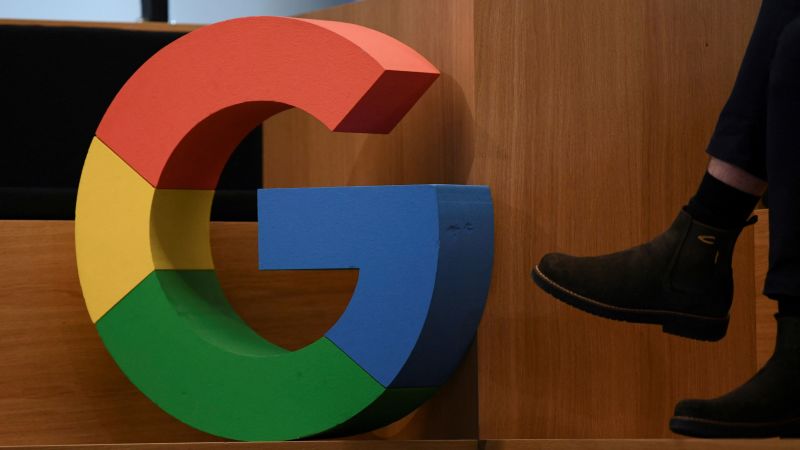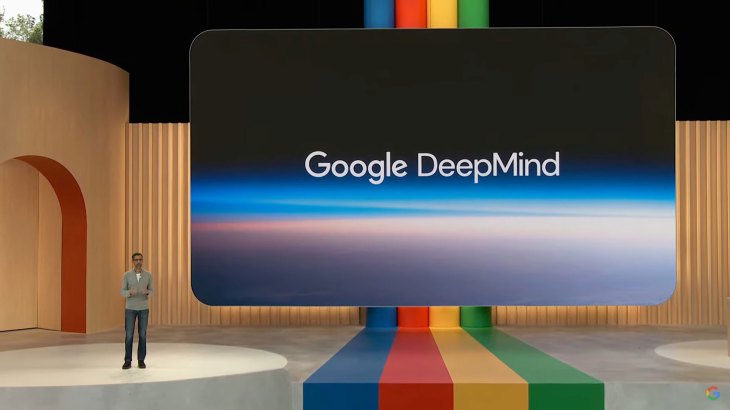Google Introduces Innovative Watermarking Solution to Safeguard Authenticity of AI-Generated Images

Google Introduces Innovative Watermarking Solution to Safeguard Authenticity of AI-Generated Images
In a groundbreaking development, tech giant Google has rolled out a pioneering method to protect the credibility and originality of AI-generated images. This move comes as a response to the growing concerns over the potential misuse and misrepresentation of AI-generated visuals, which have become increasingly sophisticated and difficult to distinguish from genuine photographs.
The newly introduced system involves the integration of subtle yet highly effective watermarks into AI-generated images. These watermarks serve as digital signatures, indicating that an image has been generated by an artificial intelligence algorithm. This innovative approach aims to address the rising concerns regarding the authenticity and ownership of AI-created visuals in an era where digital content can be easily manipulated and repurposed for various intentions.
The Power of AI-Generated Images
AI-generated images have witnessed remarkable advancements in recent years. Generative Adversarial Networks (GANs) and other similar technologies have empowered AI to create remarkably realistic images that often deceive human observers. These images find applications in various fields, including art, design, fashion, and even in scientific research. However, the impressive capabilities of AI-generated images have also sparked apprehensions related to their potential misuse, copyright violations, and false representation.

The Need for Watermarking
As AI-generated images gain sophistication, it has become progressively challenging to differentiate between human-captured images and AI-generated ones. This poses a significant concern, as the boundary between reality and artificiality blurs. Malicious actors could exploit this gray area to propagate misinformation, damage reputations, or violate copyright. Therefore, the integration of watermarks into AI-generated images emerges as a proactive measure to thwart any potential misuse and to uphold the integrity of digital content.
Understanding the Watermarking Process
Google’s watermarking process involves embedding unique digital markers within the image data. These markers are imperceptible to the human eye but can be easily identified and decoded by automated algorithms. The watermark essentially contains information about the image’s origin, the AI model used to create it, and a timestamp. This data acts as a digital fingerprint, allowing for easy verification of an image’s authenticity.
Preserving Aesthetics and Quality
One of the key challenges in implementing watermarks for AI-generated images is to ensure that they do not degrade the visual quality or aesthetics of the image. Google’s solution addresses this challenge adeptly, as the watermarks are seamlessly integrated, preserving the image’s integrity and appeal. This delicate balance between security and aesthetics is crucial in promoting the adoption of watermarking technology across different sectors.
Potential Applications and Impact
The introduction of watermarks for AI-generated images carries significant implications across various domains. In the art world, where AI-generated artworks are gaining recognition, the authenticity of these creations can now be certified more effectively. Similarly, in journalism, the credibility of images accompanying news stories can be enhanced through this watermarking system, reducing the risk of manipulated visuals being presented as evidence.

Moreover, the business realm stands to benefit greatly from this innovation. E-commerce platforms can employ watermarked images to assure customers of the authenticity of their products. The fashion industry, for instance, can use this technology to validate the originality of AI-designed clothing and accessories. By leveraging AI image watermarking, businesses can foster trust and transparency with their consumers.
Addressing Concerns
While the introduction of watermarking for AI-generated images is a significant step forward, some concerns have been raised regarding the potential circumvention of these watermarks. As with any technology-based security measure, there is a possibility that malicious actors may attempt to find ways to remove or alter the watermarks. To counter such attempts, Google has implemented advanced encryption techniques that make tampering with the watermarks exceptionally challenging.
The Road Ahead
Google’s pioneering effort in introducing watermarks for AI-generated images underscores the company’s commitment to fostering responsible AI development. As AI continues to reshape various aspects of our lives, ensuring the authenticity of digital content becomes increasingly crucial. This initiative is likely to pave the way for further research and innovation in the realm of AI security, potentially inspiring other tech companies to adopt similar measures.

In Conclusion
The introduction of watermarks for AI-generated images marks a significant leap forward in addressing concerns related to image authenticity and ownership. Google’s innovative approach to embedding imperceptible digital signatures within AI-generated visuals provides a promising solution to a complex challenge. By doing so, the tech giant not only enhances the credibility of AI-generated content but also sets a precedent for responsible AI development in an era where the line between reality and artificiality is becoming progressively finer. As technology continues to advance, initiatives like these remind us of the importance of maintaining transparency, integrity, and authenticity in the digital world.




